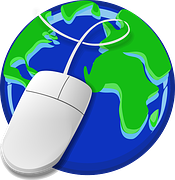New study on internet-based CBT
Online test
Find out the severity of your symptoms with this free online test
Compulsive hair pulling, although common, is still little known within the medical profession. As such there is a lack of resources for those suffering with the condition. In addition, traditional face-to-face therapy can be very costly, thereby making it inaccessible to most people.
What is Internet-based CBT?
Cognitive Behavioral Therapy (CBT) is considered to be the most effective form of therapy for body-focussed repetitive behaviors such as trichotillomania. It is traditionally a talking therapy, offered individually or in group settings. CBT differs from most other talking therapies in that it focusses on the here and now rather than analysing and reflecting on the past. CBT is a very practical approach with emphasis on teaching individuals to develop internal skills and adopt behavioral strategies to overcome problems. Awareness of what the undesirable behavior is and its relationship with our thoughts and feelings are fundamental aspect of CBT. As such CBT also lends itels to self-help and self-directed learning. Hereby the individual may complete self-rating scales or complete worksheets on their own withour guidance from a therapist. With the advent of technology and the digital world, its no surprise that these forms of self-directed treatment has transformed from the traditional pen and paper to a digitized platform such as the internet. Internet-based CBT (iCBT) therefore applies the same therapeutic principles as face-to-face therapy, only in iCBT the information is provided online and requires an element of self-improvement. The advantage of this as opposed to a book program is that support can be offered to the user. So treatment can be clinician guided (via telephonic, email, or skype) or it can be self-guided. Internet-based cognitive behavioral therapy has thus increasingly been studied in recent years as a potential way to overcome many of the barriers to accessible treatment currently faced by so many trichotillomania sufferers.
Does it work?
In 2014, Wootton et al, conducted a study exploring the efficacy of a new iCBT intervention for Obsessive Compulsive Disorder (OCD) in two open trials. The OCD course was provided in a self-guided format. In the first open trial 44% of participants completed the OCD Course within 8 weeks and significant improvements in OCD symptoms were observed from pre-treatment to post-treatment and at 3-month follow-up, and 80% of particiapnts indicated it was worth their time and that they would recommend it to a friend. In the second trial the time allowed to complete the intervention was increased from 8 weeks to 10 weeks to allow more practice of exposure and response prevention (ERP) tasks. Significant reductions in symptoms of OCD were found here too, but the satisfaction rate increase with 100% indicating that they would recommend the course to a friend.
In June 2015 a new study was published, which aimed to extend the existing literature by reporting the long-term follow-up of self-guided iCBT for OCD. It was hypothesized that participants would maintain treatment gains at 12-months post-treatment. A group of 28 particiapants from the 2014 Wootton open trial described above were followed up 12-months after the completion of the iCBT Course. If was found that 32% met criteria for reliable improvement at 12-month follow-up, of which 33% met criteria for clinically significant change. The study therefore indicates that gains made in an entirely self-guided iCBT course may be sustained up to 12-months post-treatment.
So it works for OCD, what about trich?
The dramatically reduced cost of iCBT programs as compared with face-to-face therapy has important implications for improving access to treatment for individuals with OCD, especially those who are reluctant to seek help due to stigma. But how does this help those with trichotillomania? Well the most recent version of the Diagnostice and Statistical Manual (DSM5) categorized trichotillomania under OCD-related disorders. It stands to reason that the principles of success in OCD iCBT programs could be applied to the treatment of trichotillomania as well. At TrichStop.com we have launched an 8-week iCBT program, but we offer it as a therapist-guided program, which we believe will enhance the outcomes for our clients. Research comparing the efficacy of a therapist-guided iCBT compared with completely self-guided iCBT should be conducted and specifically applied to the treatment of body-focussed repetitive behaviors such as trichotillomania.
Online test
Find out the severity of your symptoms with this free online test
Start your journey with TrichStop
Take control of your life and find freedom from hair pulling through professional therapy and evidence-based behavioral techniques.
Start Now



